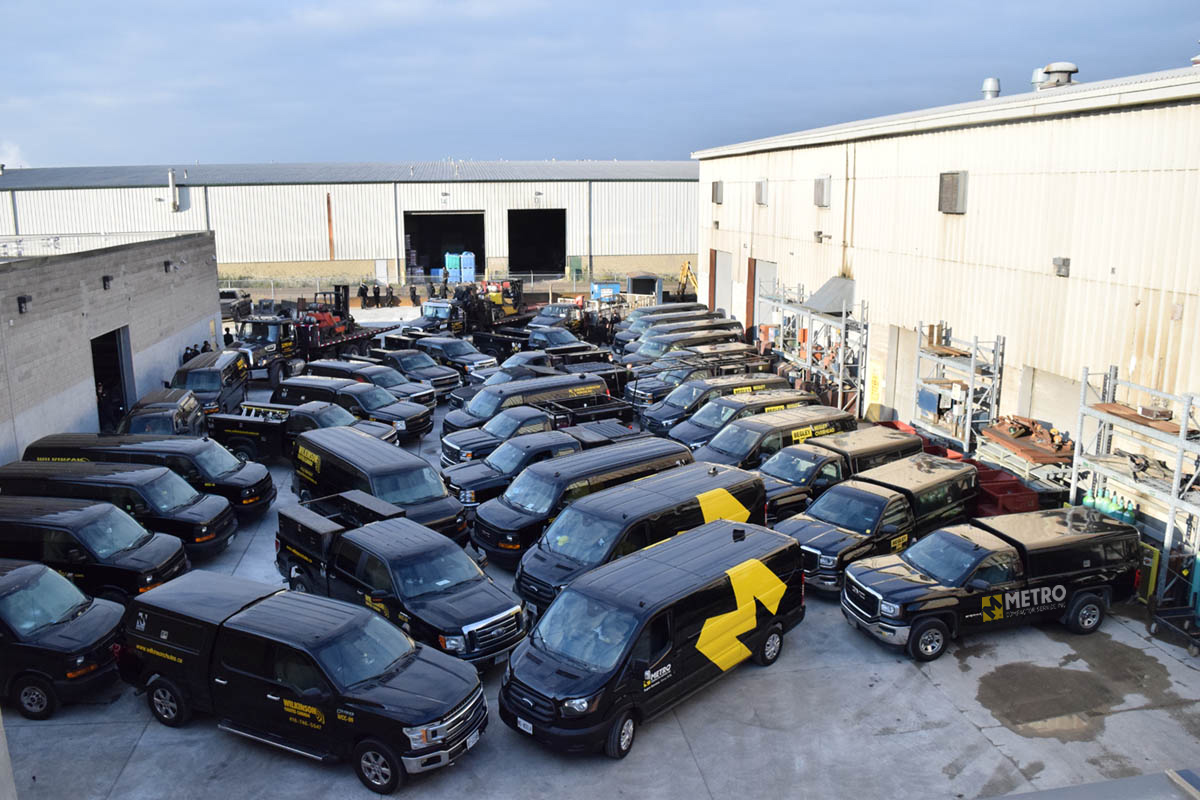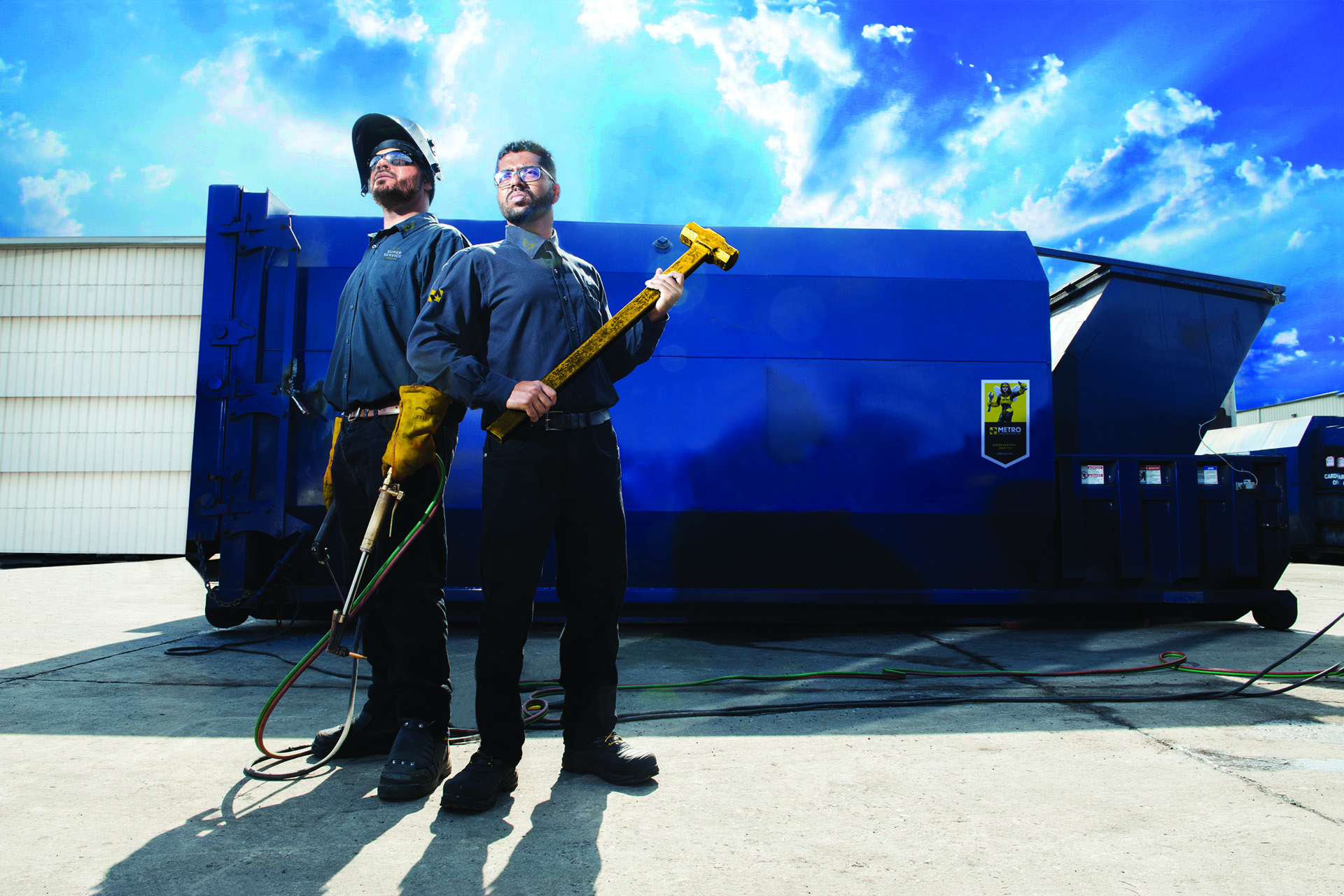Inexpensive Baler Rental for Businesses Taking Care Of Large Quantities
Inexpensive Baler Rental for Businesses Taking Care Of Large Quantities
Blog Article
Exploring the Necessary Duty of Waste Devices in Modern Recycling Processes and Sustainable Waste Disposal Practices
The vital role of waste devices in modern-day reusing procedures underscores its importance in accomplishing sustainable garbage disposal methods. Advanced systems, such as automated sorting innovations and compactors, not only improve performance but likewise play an essential role in lowering contamination rates and enhancing product recovery. As the demand for more sustainable solutions grows, it is necessary to check out just how these modern technologies adapt to developing difficulties within waste management. What cutting-edge advancements are on the perspective that could further change these processes?
Relevance of Waste Equipment
Why is waste devices essential in the recycling procedure? The efficiency of recycling procedures pivots significantly on the availability and capability of waste devices. This group of equipment and tools is essential for the effective collection, processing, and sorting of recyclable materials. By promoting the splitting up of materials, waste equipment decreases contamination, which is extremely important in making sure top quality recyclables that can be reintroduced right into manufacturing cycles.
Furthermore, waste devices improves operational effectiveness and security within recycling centers. Advanced equipment, such as shredders and balers, enables the rapid handling of huge quantities of waste, reducing labor costs and processing time. Furthermore, the usage of specialized tools lowers the threat of injury amongst employees by automating hazardous jobs.
Moreover, the environmental impact of recycling is amplified by effective waste devices. By optimizing the reusing process, centers can significantly decrease the quantity of waste sent to land fills, thus contributing to sustainability efforts. Finally, waste devices is not simply an ancillary part of reusing; it is a fundamental aspect that drives performance, safety and security, and environmental stewardship in modern-day waste monitoring techniques.
Types of Waste Equipment
The efficiency of reusing procedures is very closely linked to the specific kinds of waste tools used at the same time. baler rental. Various groups of devices are important to the collection, sorting, handling, and transport of recyclable materials
To start with, collection equipment, such as waste collection trucks and containers, is necessary for gathering recyclables from numerous sources, including residential, industrial, and industrial places. As soon as accumulated, arranging equipment, including conveyor belts, shredders, and magnetic separators, plays a vital role in identifying various material kinds, making sure that pollutants are eliminated prior to processing.
Processing devices, such as balers and compactors, even more prepares materials for recycling by compressing and packaging them right into convenient sizes. This not only maximizes room however likewise improves transportation efficiency. In addition, specialized equipment like granulators and extruders is used for transforming products into recyclable types, particularly in plastic recycling.

Role in Recycling Procedures
In reusing processes, the function of waste devices is pivotal in ensuring effectiveness and efficiency at every stage. This devices includes an array of machinery developed to handle, procedure, and kind products that are to be reused. The preliminary stage entails collection and transportation, where compactors and balers play a critical duty in optimizing the volume of materials for transportation, hence minimizing operational costs.
When at the reusing center, shredders and crushers enter play, breaking down products into manageable dimensions suitable for additional handling. These devices add to enhancing the area of recyclables, promoting more reliable material recuperation. Sorting systems, outfitted with sophisticated innovations such as conveyor belts and optical sensing units, guarantee that products are precisely separated by kind, therefore optimizing the top quality of the recycled end product.
In addition, customized tools for processing specific products-- such as glass, plastics, and steels-- makes certain that each kind is managed in one of the most efficient way. In general, the assimilation of innovative waste equipment into the reusing process not only enhances operations however also considerably adds to the overall healing rates of Click This Link valuable materials, highlighting its necessary function in modern recycling initiatives.
Impact on Lasting Practices
With the effective operation of waste equipment, reusing procedures substantially enhance lasting methods throughout various site link sectors. By improving sorting and handling features, advanced waste tools lessens contamination in recyclable materials, thus boosting the top quality of recycled result.

In addition, the combination of wise technologies in waste monitoring systems enables real-time data monitoring and analysis, causing more informed decision-making and operational performances. As markets increasingly prioritize sustainability, the function of waste tools comes to be vital in shaping practices that align with environmental stewardship and governing conformity. Eventually, the harmony between waste tools and recycling procedures plays an essential role ahead of time more comprehensive sustainability objectives across areas and markets alike.
Future Fads in Waste Management
Emerging fads in waste administration are positioned to improve the landscape of recycling and resource recovery substantially. Among one of the most essential shifts is the integration of advanced technologies such as man-made knowledge, maker learning, and the Internet of Things (IoT) These technologies promote enhanced sorting processes, boosting the efficiency and accuracy of recycling operations. Smart waste containers equipped with sensors can keep track of waste levels in real-time, optimizing collection routes and decreasing functional costs.
In addition, the circular economy model is getting traction, promoting the concept of reusing materials instead of taking care of them. This pattern encourages my site businesses to create products with end-of-life factors to consider in mind, driving the need for ingenious waste administration services.
Additionally, public recognition and engagement in sustainability techniques get on the surge, resulting in enhanced involvement in recycling programs. Government plans are also developing, with stricter laws on garbage disposal and rewards for lasting practices.
As these fads merge, they produce a much more effective, sustainable waste management system that not just reduces environmental influence yet also fosters financial development with source recovery and advancement in waste equipment. The future of waste management looks promising, driven by innovation and a dedication to sustainability.
Final Thought
In final thought, waste equipment plays a pivotal duty in boosting the efficiency and effectiveness of contemporary recycling processes. As waste administration proceeds to progress, the relevance of cutting-edge waste tools will stay paramount in achieving sustainability objectives and resolving the difficulties of resource depletion.
Report this page